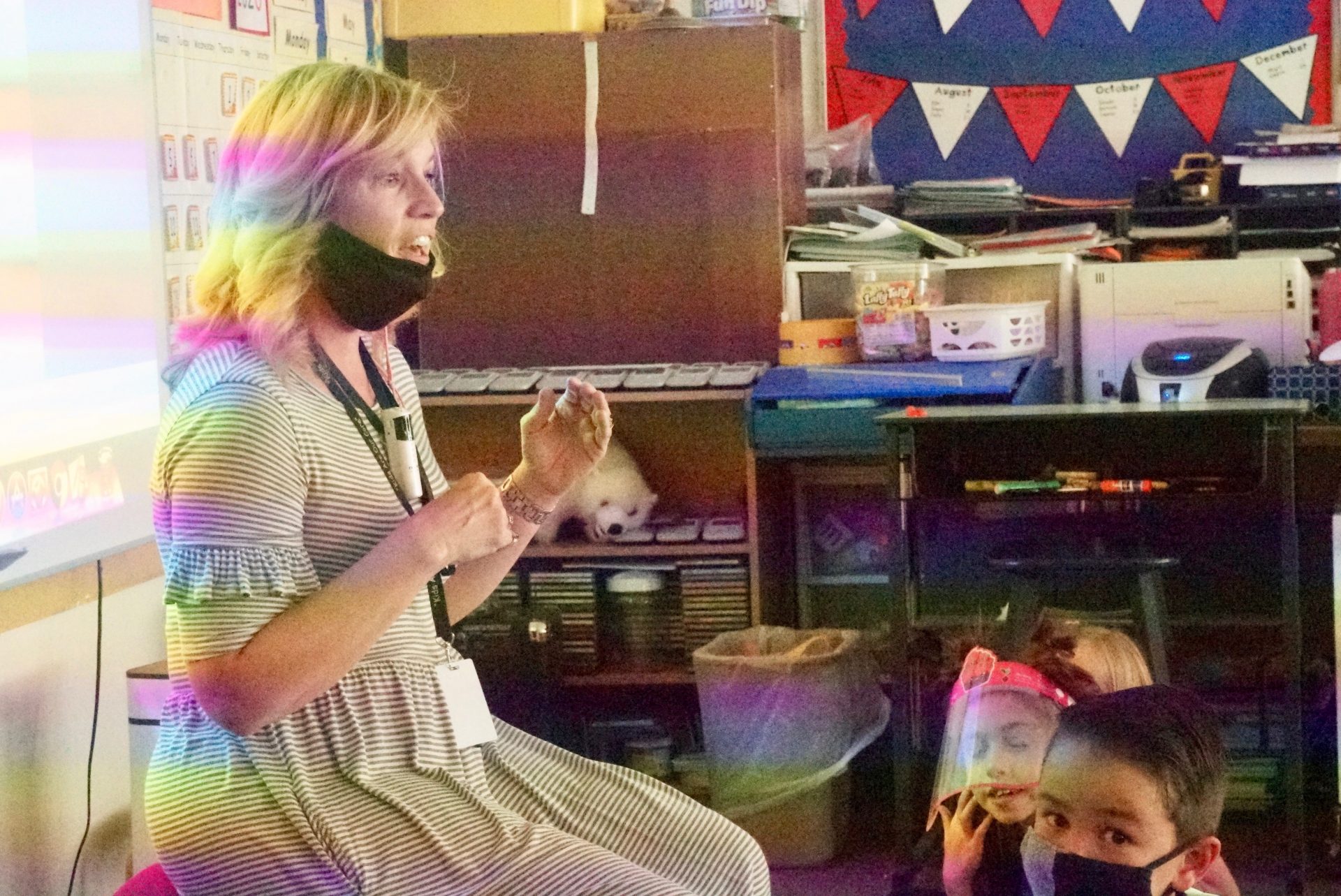The muffled chants of first graders filled the air in Melissa Hunt’s classroom Wednesday afternoon.
Seated on color-coded dots on the floor to ensure social distancing, the 24 masked 6-year-olds followed Hunt through a sing along about the sounds of nature: owls hooting, wolves howling, waterfalls falling.

Despite the masks and strategic spacing, the activity provided some normalcy to a teacher immersed in the most abnormal school year of her 32-year career.
“There’s been nothing like it,” Hunt said of COVID-19 after the bell rang.
Last week marked the second time in nearly two months Hunt had all of her students in class for a full week, including my daughter, Emerie. Other weeks, kids have attended in cohorts — or not at all.
The back-and-forth between remote and in-person learning threw my family into a vertiginous spell of tears, fears and force in recent weeks. From “homeschooling” to all-out mutinies, the mashup has crushed our hopes for a routine during a global pandemic.
As a former teacher, I’ve thought about the plight of educators grappling with the same state of affairs.
So have some of you.
“I feel your pain,” EdNews reader Barbie Elleson wrote in response to my kindergartener’s reluctance to go to school in recent weeks. “Teachers are doing their best.”
“(It’s) such a hard time to be a student, a parent, or an educator,” wrote teacher and EdNews reader Valorie Atkins.
Points well taken. I wanted to know more, so I sat down with Hunt last week to gauge the impacts back-to-school 2020 has had on one of my own kid’s teachers.
The struggle has been mutual, she assured me. “Teachers are known for being flexible, but this has been a lot.”
Those frustrations stemming from a lack of routine? They pop up at school, too, Hunt said.
She recalled one students’ recent bout with misplacing his mask.
“I hate COVID!” he blurted after a fruitless search of the classroom.
Other challenges stem from efforts to adjust to a pandemic fraught with uncertainty. Hunt recalled spending hours installing a robotic camera capable of following her around the classrooms during remote lessons — only to be told by the district that it threatened students’ privacy and not to use it.
Then there’s the array of scheduling changes accompanying the first weeks of school.
Increased local cases of COVID-19 prompted our district to start school with remote learning. Two weeks in, the kids were back in school — for one week, before shifting to a hybrid model. Students are now back full-time for who knows how long.
Ensuring that her schedule aligns with things like PE and music time is an ongoing challenge, Hunt said.
But hybrid learning’s impact has been a bigger disruption. Under the district’s hybrid model, Hunt and her colleagues aren’t allowed to cover new material when kids are at home. That means students learn new things two days a week and review that same material with their parents the other two days.
“It’s like getting half a year of learning,” said Hunt.
That challenge has yielded some positive outcomes — and a sense of urgency.
“There’s just no room to waste time now,” said Hunt.
This week, she cracked into lessons on counting money and reading clocks — things she wouldn’t normally get to for months.
Another unexpected plus: finding more humor in difficult situations.
She recalled another student who recently “lost” her mask, which was fastened securely around her neck.
“Sometimes you just have to laugh,” Hunt said.
Teachers, how has back to school been for you? I’d love to hear from you at [email protected].
